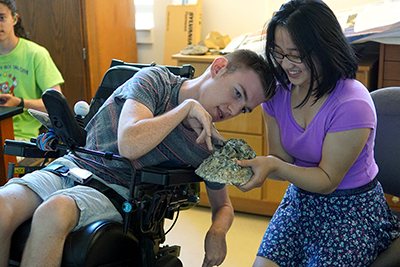Equal Access: Universal Design of Your NSF INCLUDES Project

Three NSF Eddie Bernice Johnson INCLUDES projects with ties to DO-IT have worked together to offer a publication called "Equal Access: Universal Design of Your NSF INCLUDES Project." The publication is offered as an accessible PDF and also as an accessible webpage.
The resource was developed through collaboration between the Alliance for Interdisciplinary Innovation in Computing Education (AiiCE), the Alliance for Students with Disabilities for Inclusion, Networking, and Transition Opportunities in STEM (TAPDINTO-STEM), and a project called AccessINCLUDES. The publication supports the goal of the INCLUDES program, which is to "improve collaborative efforts aimed at enhancing the preparation, increasing the participation, and ensuring the contributions of individuals from groups that have been historically underrepresented and underserved in the STEM enterprise…"
The resource describes ways that projects can plan ahead to embrace the talents of individuals with disabilities by adopting principles of universal design. Universal design involves the design of products and environments to be usable by all people, to the greatest extent possible, without the need for adaptation or accommodations. This means that rather than designing for the average person, your project can design for people with differing native languages, gender identities, racial and ethnic backgrounds, and abilities. The universal design of your NSF INCLUDES project will make its resources, training sessions, meetings, and other offerings welcoming and accessible to a broad audience that include those with disabilities and minimize the need for accommodations for individual participants.
The publication offers suggestions in different areas of project implementation, such as
- Planning, policies, and evaluation;
- information resources and technology;
- project spaces and facilities; and
- staff training.
We hope that other INCLUDES projects use the information from the publication to ensure that their projects and activities are accessible and welcoming to people with disabilities.